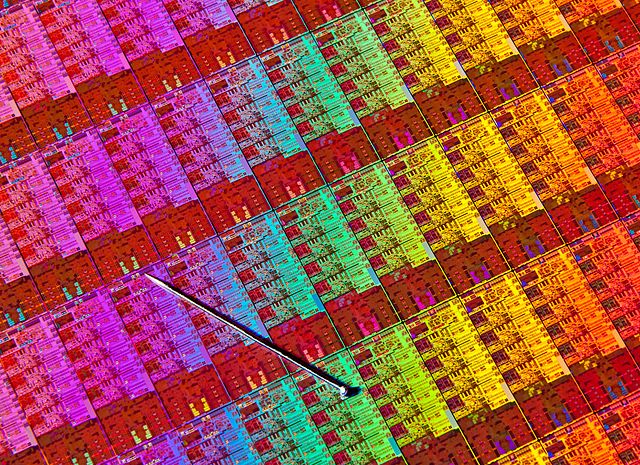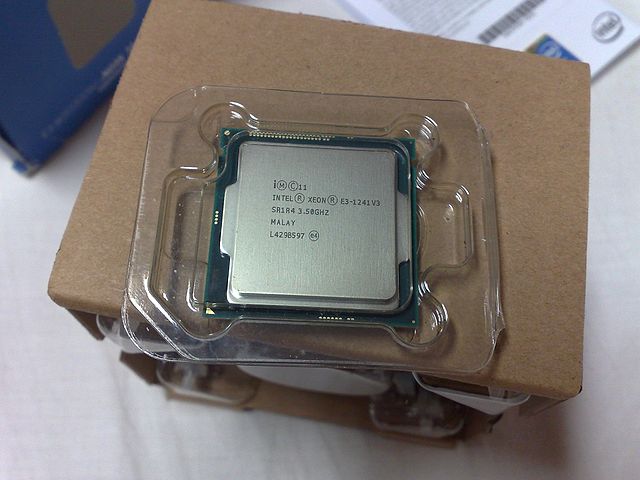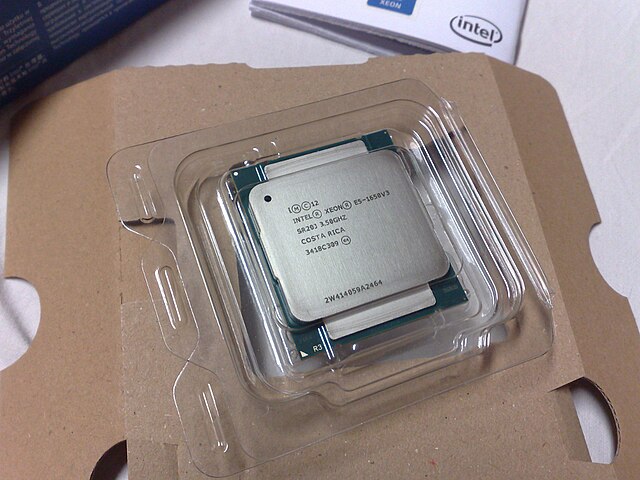A voltage regulator module (VRM), sometimes called processor power module (PPM), is a buck converter that provides microprocessor and chipset the appropriate supply voltage, converting +3.3 V, +5 V or +12 V to lower voltages required by the devices, allowing devices with different supply voltages be mounted on the same motherboard. On personal computer (PC) systems, the VRM is typically made up of power MOSFET devices.
Voltage regulator module for an IBM Netfinity 7000 M10 server running an Intel Xeon 500 MHz processor
Voltage regulator module for a Gigabyte Aorus X570 motherboard running on AMD Socket AM4
Voltage regulator module (parts external to the processor's fully integrated voltage regulator) on a computer motherboard, covered with heat sinks
Haswell (microarchitecture)
Haswell is the codename for a processor microarchitecture developed by Intel as the "fourth-generation core" successor to the Ivy Bridge. Intel officially announced CPUs based on this microarchitecture on June 4, 2013, at Computex Taipei 2013, while a working Haswell chip was demonstrated at the 2011 Intel Developer Forum. Haswell was the last generation of Intel processor to have socketed processors on mobile. With Haswell, which uses a 22 nm process, Intel also introduced low-power processors designed for convertible or "hybrid" ultrabooks, designated by the "U" suffix. Haswell began shipping to manufacturers and OEMs in mid-2013, with its desktop chips officially launched in September 2013.
A Haswell wafer with several dies, with a pin for scale
Intel Haswell i7-4771 CPU, sitting atop its original packaging that contains an OEM fan-cooled heatsink
Intel Xeon E3-1241 v3 CPU, on top of its original packaging with an OEM fan-cooled heatsink
Intel Xeon E5-1650 v3 CPU; its retail box contains no OEM heatsink







